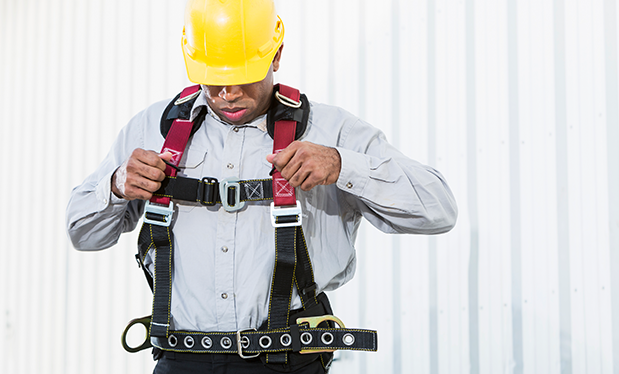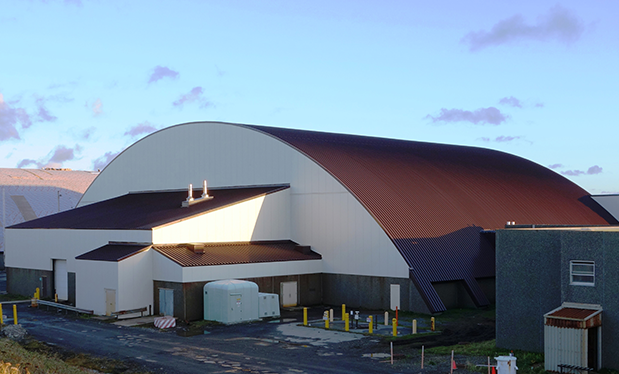In March, I addressed NRCA recommendations for the use of rigid board, faced, polyisocyanurate insulation as components of membrane roof systems. Included in those recommendations is the use of a suitable cover board layer. Following is some background information and NRCA's rationale and current recommendations for the use and selection of cover boards.
Background
NRCA first recommended the use of cover boards in an interim alert bulletin (NRCA Technical Bulletin No. 4) dated Aug. 10, 1978. The bulletin cited concerns about the growing incidence of blistering of roof membranes installed over rigid board polyurethane roof insulation. Installing a thin layer of wood fiberboard, perlite board or fiberglass board insulation was recommended with joints staggered from those of the polyurethane insulation layer below.
NRCA Technical Bulletin No. 7, dated March 1, 1979, further reinforced NRCA's previous recommendation.
In July 1981, NRCA Technical Bulletin No. 9 was issued and superseded Technical Bulletin No. 7. The bulletin indicated the preferred method for installing rigid board insulation was in two layers (base and cover board layers) and cover board usage was the then-current, best state-of-the-art practice.
In September 1988, NRCA issued Technical Bulletin No. 9, "NRCA statement on polyisocyanurate, polyurethane and phenolic foam roof insulations." The bulletin cited field and laboratory tests conducted by NRCA and the Midwest Roofing Contractors Association documenting concerns with membrane blistering from insulation facer sheets, facer sheet delamination concerns and inadequate insulation compression resistance to withstand normally anticipated construction loads during application.
The NRCA Roofing and Waterproofing Manual, Fourth Edition (1996) expanded upon these recommendations to also apply to polymer-modified bitumen membrane roof systems.
In March 2000, NRCA issued Technical Bulletin 2000-3, "Use of cover boards over polyisocyanurate roof insulation," which further expanded its previous recommendation to apply to all membrane roof systems, including single-ply membrane roof systems. This bulletin indicated polyisocyanurate insulation can exhibit problems, including facer-sheet delamination, edge cavitation, cupping or bowing, shrinkage, and crushing or powdering. A suitable cover board can separate a roof membrane from the polyisocyanurate insulation; allows for installation of insulation board layers in two layers with staggered board joints; and may be required to achieve specific roof assembly fire-resistance classifications. The bulletin identified common cover boards as glass-faced gypsum board, perlite board, wood fiberboard, fiberglass board and mineral fiberboard.
The cover board recommendation provided by Technical Bulletin 2000-3 was incorporated into The NRCA Roofing and Waterproofing Manual, Fifth Edition (2001), The NRCA Roofing Manual: Membrane Roof Systems—2007 and The NRCA Roofing Manual: Membrane Roof Systems—2011.
Current recommendations
In The NRCA Roofing Manual: Membrane Roof Systems—2015, NRCA maintains its longstanding recommendation for the use of cover boards in built-up, polymer-modified bitumen and single-ply membrane roof systems installed over above-deck rigid board thermal insulation.
In addition to the reasons cited in NRCA Technical Bulletins, The NRCA Roofing and Waterproofing Manual and The NRCA Roofing Manual: Membrane Roof Systems, cover board usage separates roof membranes from the aesthetic and potential performance effects of knit line depressions and rutting in polyisocyanurate insulation boards' surfaces. For additional information regarding polyisocyanurate insulation board knit line surface depressions and rutting, see "Another round," February 2016 issue.
In The NRCA Roofing Manual: Membrane Roof Systems—2015 Chapter 1-Roof System Configurations, NRCA recommends use of specific cover boards with specific roof membrane system types. Cover board selection also should be coordinated with roof membrane system manufacturers' guidelines and any necessary fire- and wind-resistance classifications (UL's classifications and FM Approvals' approvals).
Additional information regarding cover boards is provided in Chapter 1-Roof System Configurations and Chapter 4-Rigid Board Insulation of The NRCA Roofing Manual: Membrane Roof Systems—2015.
Mark S. Graham is NRCA's vice president of technical services.



